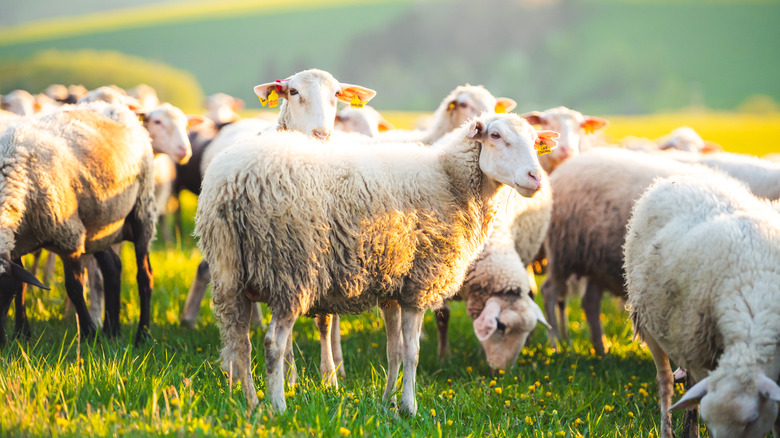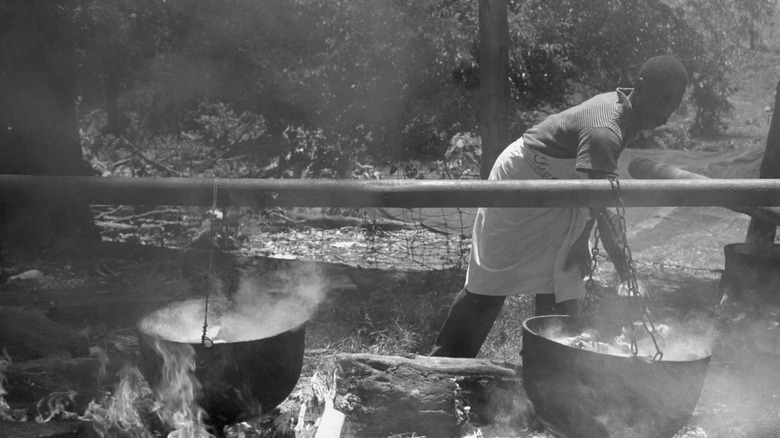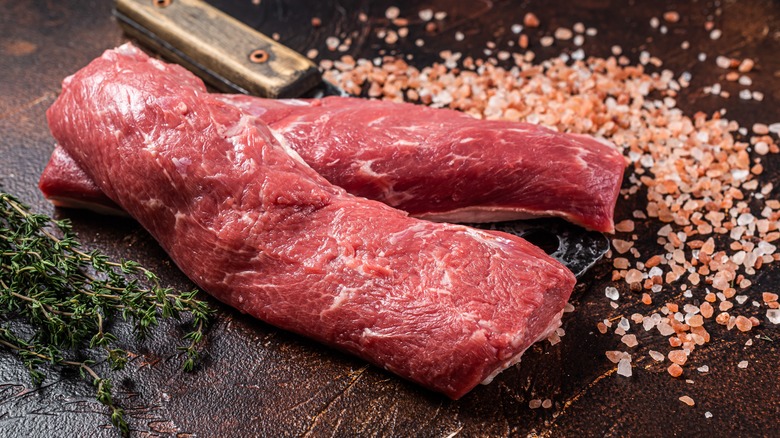How Mutton Barbecue Became An Iconic Dish In Western Kentucky
Centuries ago, Spanish explorers noticed Caribbean natives tossing everything from bear to pumpkin on what they called a barbacoa, a rack made of green wood set over a fire. Similar things were soon being done along the eastern seaboard. Most barbecue today is made from either beef or pork, with the notable exception of Kentucky — its specialty is mutton, the name for sheep over a year old. (Lamb is the name we give sheep younger than a year, and a similar distinction is made between beef and veal.)
Why mutton, and why Kentucky? The short answer is because barbecue has always been poor people's food: slow-cooked meats that are plentiful but too tough to prepare by other means. In the 1800s, Kentucky had a whole lot of sheep. If you're a 'cue fan, you already know about the smoky deliciousness produced in Texas, Tennessee, and North Carolina. Now it's time to learn about Owensboro, Kentucky.
The Dallas Tariff
Kentucky's sheep population boomed after the passage of the so-called "Dallas Tariff" of 1816, which was enacted to protect domestic industries, like those that manufactured wool and cotton. Owensboro, which (somewhat brazenly) calls itself the "Barbecue Capital of the World," is located in Daviess County in the western part of Kentucky.
Many early settlers of Daviess County were Catholic and raised sheep for wool production. It didn't make economic sense for the sheep farmers to slaughter their lambs when they still had years of wool production ahead of them, so the logical thing to do was learn how to prepare a really tender plate of mutton to feed the farm hands once the animals got old. The added benefit of barbecue's preservative qualities (courtesy of the curing properties of smoke and salt) meant that — among other summer activities like barn raisings and church picnics — mutton was cooked over long pits of hickory wood.
Owensboro 'cue and black vinegar sauce
Traditional pit-cooked Kentucky barbecue is a process that can take up to 22 hours. While mutton is being smoked in Owensboro's Old Hickory Bar-B-Q, it is slathered with a mop consisting of water, salt, vinegar, and hot peppers. In addition to being a flavoring agent, this wash helps break down the mutton's tough muscle fiber. After reaching an internal temperature of 170 degrees Fahrenheit, the mutton is sliced and typically served with white bread and a sauce known variously as mutton dip, Kentucky Dip, or black vinegar — which is made of Worcestershire sauce, cider vinegar, ketchup, salt, and brown sugar.
You can make Kentucky mutton barbecue at home if you have the patience and a grill that can double as a smoker. If you want to visit Owensboro to eat some, you might want to do that sooner than later. Local tastes are increasingly turning toward the brisket and pork dishes more commonly known throughout the rest of the South. But for the time being, mutton barbecue is still available, every bit as much a Kentucky tradition as bourbon and bluegrass.


